The two-store (dual-memory) model is used to explain processing within the cognitive information processing (CIP) systems.
First there is a stimulus input usually having to do with your sensory organs. Your sensory organ perceives this stimulus and transfers this information to your short-term memory (working memory). As its name implies, this working memory bank is short in duration. In order to incorporate this new information into long-term memory, one needs to encode the information (ie. connect it with some old memory) to retain this information for the long run.
Now, we all wish we can run as smooth as a computer, so if your brain is compared to a computer, it will look like this:
Unfortunately, this cartoon is more reminiscent of us.
Let us go through the 3 different types of memories one by one.
First up, sensory memories are extremely short in duration. There are two main types of sensory memory:
1) Iconic Memory (Visual) 2) Echoic Memory (Sound)

Image obtained from http://4.bp.blogspot.com/_Cgu1cdJD5ng/TUj-ahTV1eI/AAAAAAAAAlc/KzuhM-tSslw/s1600/rabbit+3.jpg
Now onto your short-term memory (also known as working memory). This memory lasts just a little longer than sensory memory. To retain information in your short-term memory (STM), rehearsal is needed.
Within your short-term memory bank, the average person can hold about 7 units (+-2 units) of items in their STM.
What is a unit you asked? An unit can be a letter, or it can be a number, or a word. Just something that makes sense to you. Of course there are ways to try to remember more in your working memory with techniques (more on that later).
Now, let’s see if you can remember at least 7 items in your own STM bank. Try this!
Now think about what strategies did you try in order to help you remember the items?
Did you try to categorize the same thing together? This strategy is known as chunking. By grouping the items that you think are similar (ie. Oranges and apples are both fruits), you can increase the units that you can remember.
Now try to remember the following letter:
U S A M S N A C E W N B C
Did you succeed?
How about chunking the same exact set of letters like so:
USA MSN ACE W NBC
Does that help?
Another strategy is using mnemonics.

Image obtained from http://4.bp.blogspot.com/_cLjM5_wo4f8/S4RGNUCs36I/AAAAAAAAABI/7SAbObUBhMs/S760/Over_the_rainbow.gif
We all remember what colours are in the rainbow. How did you recall the colours from your long term memory? Did you use Roy G. Biv? (Red, orange, yellow, green, blue, indigo and violet).
For the musicians in us.
Let’s not forget the science teachers…”I propose man are toads.” No, I don’t really believe in that, it’s the mnemonic for cell division! (Interphase, prophase, metaphase, anaphase and telophase).
Moving on to long-term memory (LTM). Unlike STM, long-term memory supposedly has unlimited storage capacity. Of course “long” could mean a couple of minutes, a day or decades. LTM is divided into 2 major categories:
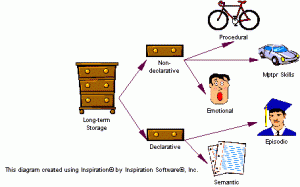
image obtained from http://www.dialogueonlearning.tc3.edu/model/environment/images/Long-term%20Storage.gif
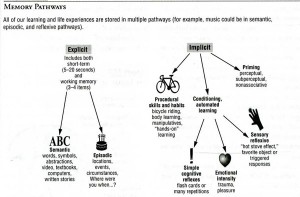
Image obtained from http://4.bp.blogspot.com/-n1IiAow5FoM/TgTFgsBnrwI/AAAAAAAAOkE/kfdSTy7bJVw/s1600/ted003.jpg
1) Explicit (conscious) Memory – knowing the what (ie. facts, beliefs, information)
2) Implicit (unconscious) Memory – knowing the how (ie. how to add, how to dance)
Explicit Memory is categorized into semantic and episodic.
Episodic memory has to do with your own personal events and stories. Your sweet 16 birthday party will be an example of episodic memory.
Semantic memory has to do with general knowledge. Such as D-day is June 6, 1944 or the capital city of Canada is Ottawa.
Implicit Memory are also called procedural memory. It is knowing how to act without really thinking about it and is associated with habits or skills you possess. For example, if I asked you to tie your shoelace, you wouldn’t have to think about making the rabbit loop, over, under and through. It comes to you without much conscious thought. You can probably also do this quite easily: 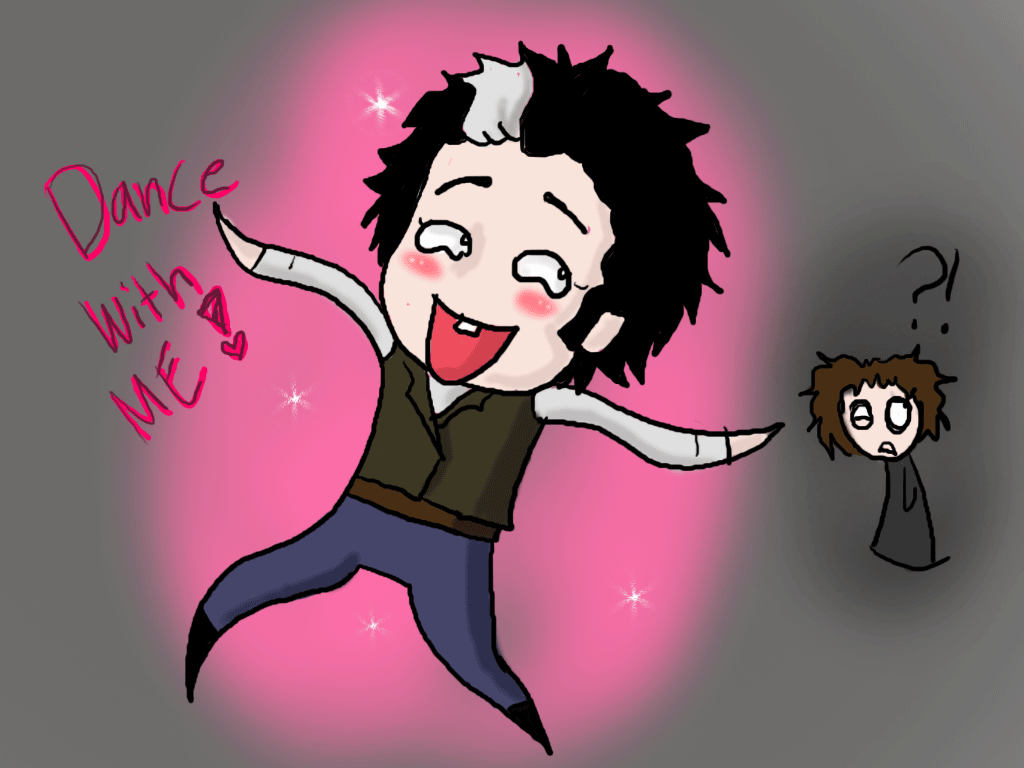
Need some pointers to help you remember better? Try to create an imagery or a story, as demonstrated by 8 time world memory champion, Dominic O’Brien.

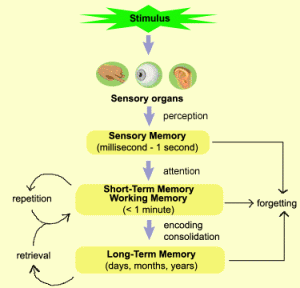


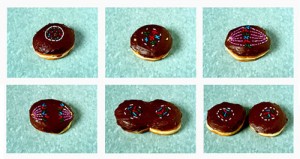

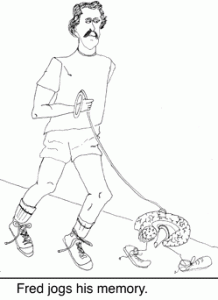
I found O’Brien’s use of story creating to remember the series of numbers incredible. I wonder how one could create such an elaborate story in such a short period. I have used this strategy myself when trying to remember phone numbers or creating mnemonics like the ones listed above. Since I am a fan of the NBA I also use player numbers to help remember numbers.
Hi Ken! I guess the video clip did not do a good job explaining what training O’Brien undergo to come up with a mnemonic like story. I wonder if it is something ingrained within him or he undergo much practice. Then again, I wonder how the memory of people with hyperthymesia (No, I am not watching that new show, Unforgettable. =P) works. Some people with hyperthymesia could only recall autobiographical information (much like a super version of explicit, episodic memory), compared to others who could remember all information (explicit, semantic memory).
This description helped me see the connection between procedural memory (implicit memory) to the notion of proprioceptive memory, or motor memory. The karate kata training that I have observed my son complete, repetitively for 10 years (he is now 2nd Dan black belt) makes this come to light in a real sense. For athletes it is all in the rehearsal of the moves under careful and controlled guidance that the memory of the details becomes automatic. Then when it comes to the day of competition, it is key to ‘release the mind’ to do the routine without thinking about it and letting the memory take over. It’s like letting the computer take over, letting it run the program, without consciously thinking about it.
It is interesting Helen what you say about releasing the mind to do the routine without thinking. Eventually, what is in our memory stays there… but for one thing is that if we are not using it (not doing the routine) for a while… we eventually forget most or some of it.
Johanne
I really enjoyed this presentation. Very well done job guys! It is clear and very well explained. Nice activities to do along the reading also.
Like Ken I was surprised about O’Brian way of remembering numbers and I also wonder if, in his case, is an exceptional physical thing. There are a few people in the world like this that can memorize numbers like that. I forgot the name of the most famous one but did watch a video on that. I wonder if the memory could have something to do with something that happened to the brain.
Johanne
I use mnemonics all the time! I found them invaluable when I was in high school and doing my undergraduate work.